Syrian Arab Republic - An ongoing oral health preventive programme
Syrian Arab Republic - An ongoing oral health preventive programme
Introduction
The WHO Collaborating Centre for Research, Training and Demonstration for Oral Health, Syria is directly responsible for the dental health care of the children in this country. An ongoing oral health preventive project conducted by this centre is presented here.
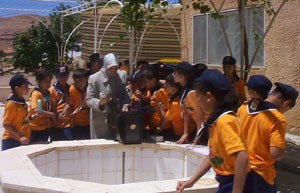
Background and Rationale
When children between 7 and 12-years-old were examined high prevalence of caries was observed especially in the first molars among the older children. This highlighted the need for a well-planned oral health programme targeting young school children.
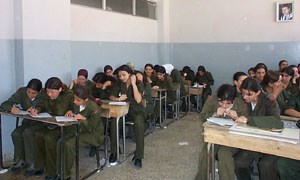
Project Outline
Aims:
- To improve oral and dental health care in the school children through increased prevention within the limits of Primary health care system.
- To increase the number of those who go through the oral health education process by 25%.
- To increase the number of students who go through F-rinsing by 25%.
- To increase the number of students who receive dental treatments by 25%.
- To decrease the risk of caries among elementary school children by 25%.
- To increase the number of executed restorative measures according to the conventional methods and according to ART-method by 25%.
- To increase the number of students that seeks dental school clinics by 30%.
- To decrease the number of school children those suffer from periodontal diseases by 25%. The amount of sufferers is estimated to be 80%.
- To increase the number of dental school clinics to 160 clinics (one clinic for every 18750 students).
- To increase the number of portable clinics from 14 to 28 clinics.
- To increase the number of employed school dentists from 202 to 333 (one dentist for every 9000 students).
- To increase the number of dentistry nurses/dental hygienists to 376 (two for every dental clinic).
- To increase the number of personnel who teach in health questions (one teacher for every 20 schools).
The strategy to achieve these goals is based on three principles:
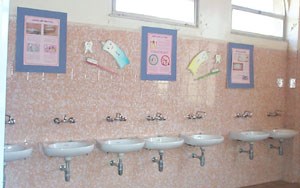
Information:
- Providing school children with information about oral health.
- Providing teachers information about oral health.
- Providing parents with information about oral health.
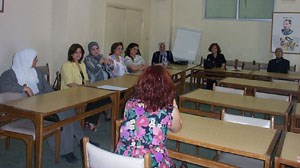
Prevention:
- Using F-rinsing.
- Using sealants
- Extending the range of preventive measures to include schools in the rural parts of the country
- Educating the dental team in the use of preventive measures.
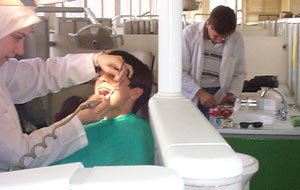
Treatment:
- Creating a dental treatment programme that includes students of all ages.
- Increasing the dental treatments for students that seek dental school clinics.
- Offering dental treatments through the portable clinics in schools.
- Restoring teeth in accordance with ART-method.
- Reaching the distant rural areas with the help of mobile clinics.


From 2001, the Centre has begun extending this programme for children aged 4 to 6-years-old mainly with dental education. The mothers are targeted through women's unions and associations in Damascus.

Achievements
Dentists, dental hygienists and especially trained personnel conduct this programme.
- Dental education programmes include large colouring books, dolls, theatre, plastic jaws etc.
- Regularly children receive 0.2% fluoride mouth-rinsing solutions freshly prepared, in mugs. Rinsing is carried out once every two weeks.
- Sometime fluoride gel is applied, but this is not done regularly due to limited resources.
- After the education programme, children are given toothbrushes, toothpastes or disclosing solutions, which are donated to the project by Signal Company.
- During the summer when schools are closed dental health education programmes are conducted in the summer camps run by the state.
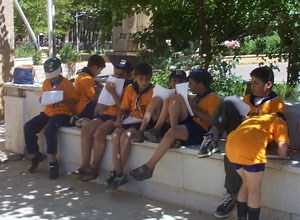
Conclusion
This is an ongoing programme mainly in the Damascus area, which will eventually include all the children in Syria.

Reference and Acknowledgements
We acknowledge the guidance of Dr. Imad AL-Naem, Director of the WHO Collaborating Centre for Research, Training and Demonstration for Oral Health, Damascus, Syria. This page is based on an Elective work in the summer of 2002 by Murtada Robeyi, dental student at the Faculty of Odontology, Malmo University.
